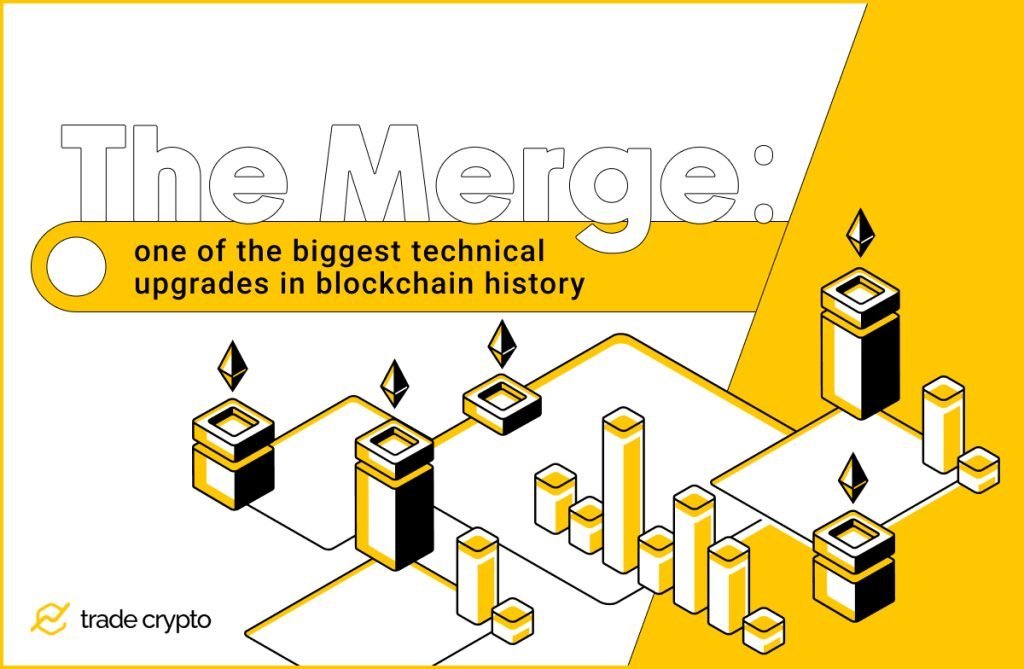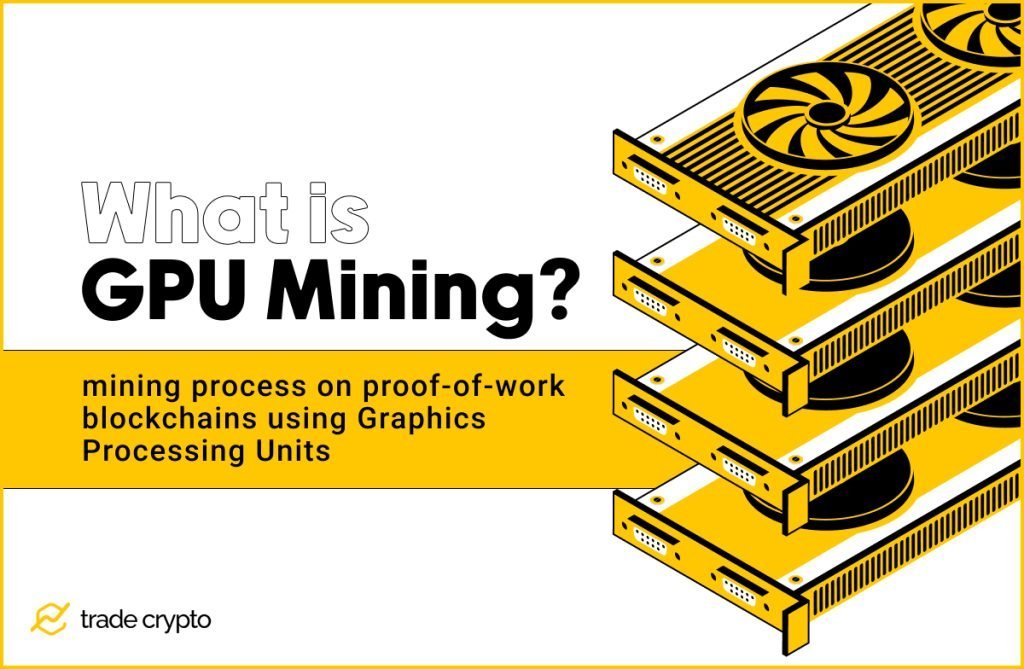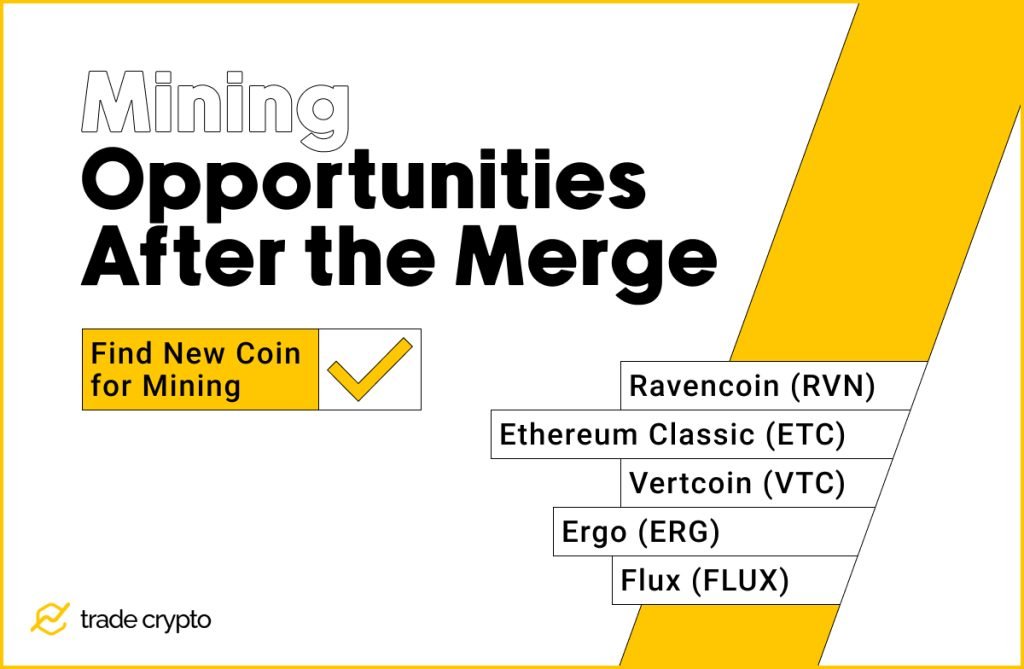Table of Contents

The Merge— one of the biggest technical upgrades in blockchain history went live on September 15th. The upgrade changed the consensus mechanism from proof-of-work (PoW) to proof-of-stake, cutting down energy consumption by 99%. If eliminating environmental concerns wasn’t enough, the upgrade also reduced ETH issuance by almost 90%.
While the Merge marks a new beginning for Ethereum to achieve scalability, it marks the end for the Ethereum mining community. As computational power is replaced with the wealth power of validators to secure the network, the mining hardware is no longer of use. Simply put, miners are left holding billions’ worth of GPU mining machines that lost access to the most lucrative opportunity in the crypto space.
So is it all over for ETH miners? Can’t they deploy the GPU hardware elsewhere and reach mining profitability? This article will answer these questions and help you navigate different mining options in the post-Merge era.
Before that, let’s quickly understand how GPU mining works on the Ethereum network.
What is GPU Mining?

The cryptocurrency mining process on proof-of-work blockchains using Graphics Processing Units (GPUs) is called GPU mining. GPUs entered the mining scene in late 2010 when Bitcoin mining started supporting new hardware devices outside of CPUs. The increased computational power, multi-purpose nature, and low cost of GPUs led to a new wave of public interest in crypto mining.
The role of GPUs in mining is to solve complex mathematical functions and append a new block of transactions to the blockchain. As the transaction data is made public across the network, the miners can collectively decide whether to approve a transaction into a block or not. So GPU miners take care of verifying transactions and prohibiting illicit activities.
As an incentive for securing the PoW blockchain network, miners are given block rewards and any transaction fees paid by users. While the underlying mining process remains the same for different PoW blockchains, the block rewards, and mining algorithm change. For example, Bitcoin uses the SHA-256 algorithm with block rewards set at 6.25 BTC. And in the case of Ethereum, it used to be 3 ETH (before the Merge) using the Ethash algorithm.
When it comes to Ethereum, GPU mining became so famous because of the high rewards. The last couple of years saw parabolic growth in DeFi and NFT platforms that primarily used the Ethereum blockchain. This spiked the gas fees to several hundred dollars, making miners extremely profitable. At the same time, the mining difficulty of Ethereum required people to buy more graphic cards. With more demand and less supply, the GPUs were selling like hotcakes with great resale value. This is also why miners continued to invest in mining rigs in 2021, despite knowing the Merge is on its way.
What Will Happen to Mining After Ethereum Moves to PoS?

The Ethereum Merge instantly turned miners from a state of profitability to survivability. This happened because the new proof-of-stake (PoS) consensus model doesn’t use any computing devices to secure the network. Rather, it adopts a model where people must commit 32 ETH to become a validator and be eligible for block rewards.
Replacing miners, we saw new validator services pop up on Ethereum blockchain ahead of the Merge. Coinbase, Binance, and Kraken are among the centralized exchanges that launched ETH staking services on the beacon chain. Lido is also a major staking provider, offering more utility with its liquid staking solutions. These companies essentially pool together all the deposited ETH from users and use the capital to become validators.
The paradigm shift in mining Ethereum has led miners to sell off their machines and participate in the network as validators. As it’s a more hand-off approach with no variable and recurring costs like electricity, most miners call are calling quits.
On the other hand, miners are trying to find new opportunities to cut losses and exit their investments at the right time. So GPU mining is not completely dead. Let’s check out what avenues can be explored to make decent returns.
Mining Opportunities After the Merge
Mining Ethereum was so rewarding in 2021 because ETH prices hit new all-time highs. Further, it was easy for miners to stop mining and sell their machines for premium prices in the secondary market. None of that is now possible. Ethereum moving to PoS and overall market conditions have made it challenging to continue mining. So it’s time to consider new mining opportunities.
Find New Coin for Mining

To survive in this bear market, miners must consider other cryptocurrencies to mine, at least in the short term. To help you navigate the current mining landscape, we have listed the top five profitable coins to mine.
Ravencoin (RVN)
Ravencoin can be a great starting point to put your GPUs to good use and start earning passive income. It is a Bitcoin-fork project launched in 2019 to create a decentralized blockchain that allows users to issue security tokens and represent any physical or virtual asset.
When it comes to mining RVN, it is cheaper compared to mining BTC. Due to the algorithm change to KAPOW, Ravencoin cannot be mined using specialized and expensive hardware like ASICs. So it is promoting more miners to join the network and start mining with low-cost GPU devices.
The process involved in setting up your mining rig is also easy-to-follow. First, you have to create a Ravencoin wallet. To do that, you must install Raven Core software and synchronize a new wallet with the blockchain. Second, you must install GPU mining software. Before downloading the software, ensure it’s compatible with your graphic card. Third, you have to join a mining pool. You can choose from here.
Finally, you must configure the mining software and double-click the start-mining file. You can receive up to 5000 RVN as a reward per block.
Ethereum Classic (ETC)
When Ethereum developers disagreed on what to do after the DAO hack, Ethereum Classic was created as a hard fork. So it still uses the proof-of-work consensus, making it a profitable coin to mine using GPUs. This is also why the price of Ethereum Classic soared in the weeks before the Merge.
Mining ETC is also simpler than any other projects in this list because ETH and ETC share the same wallet format. So all you have to do is change your blockchain network to Ethereum Classic.
If you have never mined Ethereum Classic before, you must follow three main steps. First, you must plug your mining rig into the power source and connect to the Internet. Second, you need to join a mining pool. GMiner and NBMiner are two great pools for GPU mining. You must select a server and mining port number to join a pool. Paste these details into the URL box of your mining dashboard. Finally, click on save and apply configurations to start mining.
Vertcoin (VTC)
Launched in 2014, Vertcoin has a similar vision to other blockchains like Litecoin and Bitcoin,i.e., to create a global monetary network without intermediaries. Vertcoin took it a step further to increase the degree of decentralization by deprecating large ASIC miners and giving everyday people a chance to mine using their normal desktops or computers.
Vertcoin is also the easiest coin to mine using GPUs. It only involves three simple steps. First, download the one-click miner software. Second, you must create a Vertcoin wallet. Finally, you must create an account and add your wallet address to receive VTC rewards.
After the setup, you have to choose between solo and pool mining. Solo mining is time-consuming, and you must have a separate computer for mining. On the bright side, you get to keep the entire block reward of 12.5 VTC.
Ergo (ERG)
Ergo is the only project on this list with the ability to implement smart contracts. It empowers developers to build new financial tools on top of it with features including but not limited to privacy, microcredit facilities, and Local Exchange Trading Systems (LETS).
ERG is the native token fueling Ergo’s proof-of-work smart contract platform. Unlike other coins, ERG doesn’t have a halving event. Instead, it keeps reducing rewards until the total supply of 100 million is reached.
Like Vertcoin and Ravencoin, Ergo also changed its mining algorithm to limit ASIC miners from controlling all the hashing power. Ergo promotes GPU mining with minimal prerequisites. You only need one GPU device, be it AMD or NVidia, with at least 4GB vRAM to start earning ERG rewards.
Flux (FLUX)
Flux is an emerging blockchain project that creates an infrastructure ecosystem for decentralized applications. Flux’s blockchain-as-a-service solutions include a cloud operating system, multi-asset wallet, and decentralized infrastructure. The dApps using these solutions pay Flux blockchain in FLUX tokens. These tokens are given to miners and node operators for performing decentralized computing.
If you want to mine FLUX, you must install its official wallet. Second, you need to install mining software based on which graphic card you use. Third, you need to join a mining pool. You should go solo mining if you want to earn the entire block reward of 37.5 FLUX. Finally, edit the run file and replace the existing address with your Flux wallet.
Close GPU Mining

While mining on emerging and new chains can be profitable, it is not at all a guarantee. If the project does well and delivers on its roadmap, the tokens you mined can rally and earn you significant returns on investment. However, you will incur massive losses if markets crash and investors pull out their money from risky altcoins.
You can simply shut down your mining devices and sell them on secondary marketplaces like eBay to remove uncertainty. You may have to take on some losses as GPU prices have decreased since last year. But, if you bought them at launch price, you should still see anywhere from 10-20% profits.
With the remaining capital, you can do two things. You can deploy in the markets and wait for markets to bounce back. Or, you can buy new mining devices that offer more profitable opportunities than GPUs, like ASIC miners on the Bitcoin network.
Ethereum Hard Fork (ETHW)

Hype and speculation are common when new chains are created. People start accumulating the native token of the original chain to receive a bigger airdrop from the forked chain and try to make a quick buck by selling it on decentralized exchanges.
We saw similar events take place during the Merge. A new proof-of-work chain was created, aiming to airdrop ETHPoW tokens. However, it was off to a bad start. Due to connectivity issues, it was challenging for ETH token holders to access the airdrop and sell it immediately. Those who did get access caught a decent rally to $120+ before it crashed below $10.
While it was free money for investors, it was also an easy exploit for hackers. Recently, a attacker exploited Omni Bridge’s inability to verify cross-chain messages to ETHPow chain. This allowed the attacker to take off 200WETH he moved using Omni bridge before interacting with PoW chain.
With uncertainty around security and utility of ETHPoW chain, the future direction is not looking good. It can still be a short-term opportunity to cash-in on the airdrop, but it’s not reliable long-term.
Why Isn’t Bitcoin Mining Possible Using Ethereum Miner’s GPUs?

To be able to mine Bitcoin profitably, you must have ASICs. These specialized mining devices provide more computational power with low electricity consumption compared to ordinary graphics cards. This is because ASICs are not multi-purpose. They only focus on mining activities, whereas graphic cards are also used for video rendering and gaming.
So it’s not practical to use Ethereum mining GPUs on the Bitcoin network. You will easily be outsized by institutional players who all use ASICs. Even if you join a mining pool with other GPU miners, it is not worth the investment and time dedicated to maintaining the mining rigs. Further, with Bitcoin hitting new record-highs of mining difficulty, the need for powerful machines is going to increase and GPUs can’t compete on the same level. Therefore, due to capital inefficiency, Bitcoin mining can’t be done using Ethereum miners’ GPUs.
Closing Thoughts: Don’t Go All-in on Mining
Crypto mining is a proven method to make passive income. It has worked for years, and miners profited greatly in the last bull market. However, with Ethereum moving to PoS, the $18 billion mining industry vanished, causing distress across mining communities. Even if miners deploy their machines elsewhere, the rewards won’t be as high and consistent as Ethereum. So the future direction of mining is uncertain. If you want to invest in mining, it’s better to wait until the markets recover and more profitable coins emerge.
Crypto Ping Pong Digest
Trash style news. You will definitely like














